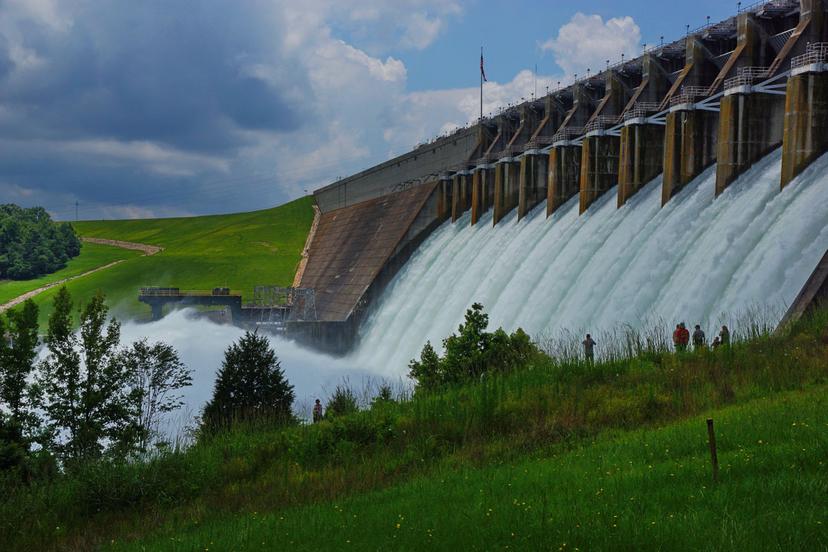Energy

Background
People have needed energy in some form for their everyday lives for hundreds of years. Even though the era of electricity and automotive transportation has been around for little more than a century, it’s hard for anyone living today to imagine a time when we couldn’t turn on a light to see at night, drive to the store when we need some milk, or stay nice and warm in the house when the outside thermometer reads 20 degrees. Each day we take it for granted that the energy we need to do everything from cooking breakfast to checking e-mail will always be there; energy in developed countries is now relied on as a necessity of life. Of course, that hasn’t always been the case.
The energy industry evolved over many centuries, and its development can be linked to the inventions and creative technologies that led to its advancement. The very first recorded use of energy occurred about 1 million years B.C., when early humans learned to control fire and use it to keep warm and cook food. They used sticks, brush, and similar sources for fuel. Over the years, however, as humans’ dwellings became more sophisticated and enclosed, people turned to burning coal. Coal was plentiful and it burned well. Coal producers were, therefore, one of the first entrants to the energy industry.
During the Middle Ages, people began to understand that water could be used as a source of energy. Hydropower was created when merchants needed power for their mills. Early mills were built on ships and bridges. The first hydraulic engineers developed large water wheels and later, hydropower dams. By the 18th century, people were looking for similar ways to harness water inland, and it wasn’t long before they realized that steam could be a valuable fuel source.
One of the first users of steam was the coal industry. Thomas Savery and Thomas Newcomen developed steam-driven pumps that were used in coal mines. These were later replaced with water-powered pumps, but this early use of steam led others to develop its energy potential. One reason that steam power spread so quickly was that most steam engines required coal as their fuel source, and coal was plentiful in most locations. In fact, as a fuel source, coal was king until the 19th century. Throughout the early days of the Industrial Revolution, coal and steam were the primary sources of energy for most factories and industrial users. It took the invention of electricity to dethrone it.
Thomas Edison was a prolific inventor in the late 19th century. He began his career working for the telegraph industry, and many of his early inventions were improvements to this technology. But it was his invention of the incandescent light bulb in 1879 that made him famous, and that launched a new sector of the energy industry. Edison’s direct current (DC) system and his subsequent power generating system on Pearl Street in lower Manhattan in New York served as distribution models for the electric industry for years.
Electric power plants began to be constructed across the country, primarily on the banks of large bodies of water, where the water could be used to help generate the electricity. However, coal quickly became the fuel source of choice for generating plants and that preference remained into the 21st century.
Beginning in the 1970s, many people in the United States and other developed countries began to worry about the environment and the effects of pollution, especially by emissions from automobiles and large industries, including electricity generation. Alternative energy sources such as wind and solar power were already being developed, and people began to seriously consider them as replacements for their power needs. Consumers began using solar panels and constructing windmills. One of the earliest examples of a wind turbine occurred during World War II. It was a large wind turbine constructed on a hilltop in Vermont called Grandpa’s Knob. It generated 1.25 megawatts of energy in winds of 30 miles per hour.
Nuclear energy was also explored as a more environmentally friendly source because it does not create carbon emissions. Nuclear power plant development plans have mostly been put on hold for further debate, however, following major nuclear accidents at power plants such as Chernobyl, Russia, in 1986 and the radiation leaks that occurred at Fukushima in Japan after the tsunami in 2011.
While traditional power generation companies still reign in the industry, the race is on in the 21st century to develop power sources that are as cost effective, use sustainable or renewable sources, and have a much smaller impact on the environment. Renewable energy comprised 17.5 percent of total U.S. power generation in 2019, according to the Energy Information Administration, double the percentage in 2008. The wind and solar energy sectors have experienced strong growth in recent years. “Build in other renewable sectors (biomass, biogas, waste-to-energy, geothermal, and hydro) continued to stall without long-term policy support” [from the U.S. government], according to Bloomberg New Energy Finance. Which sector will be the industry leader in the future is still up for debate. Of course, energy consultants say that the cheapest, most environmentally friendly type of energy is the energy you don’t use.
